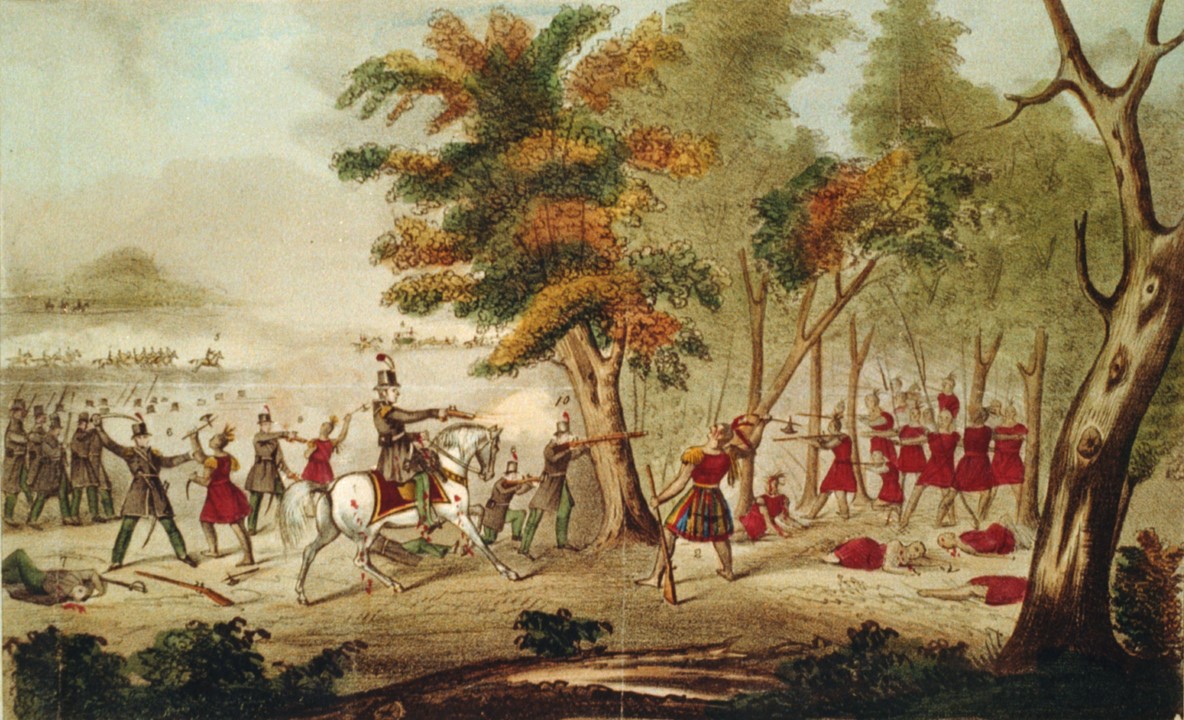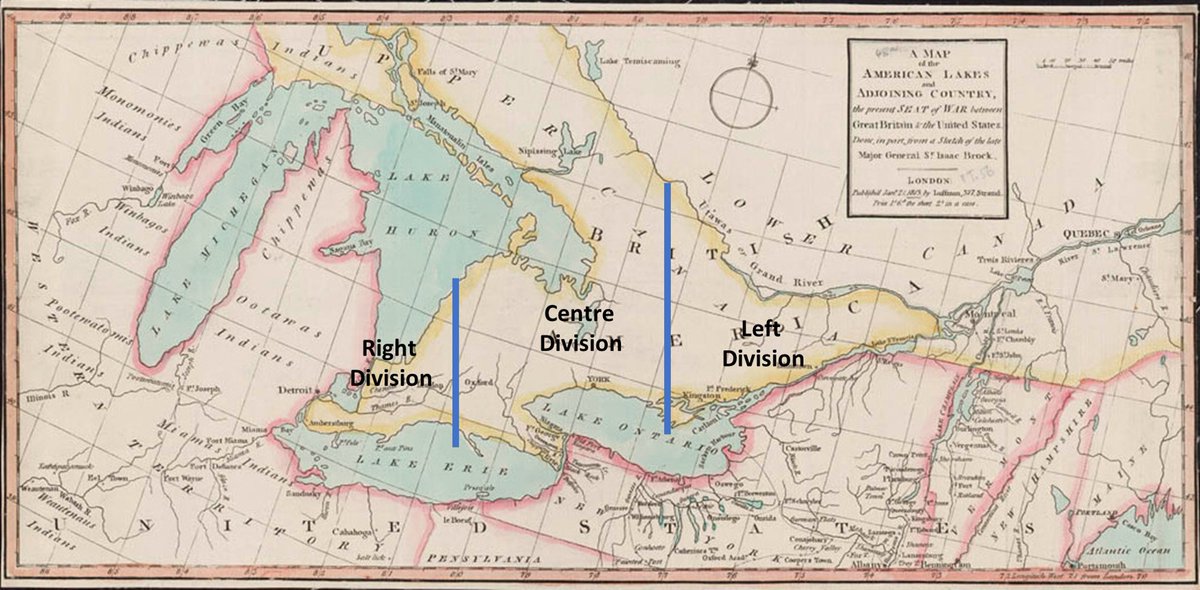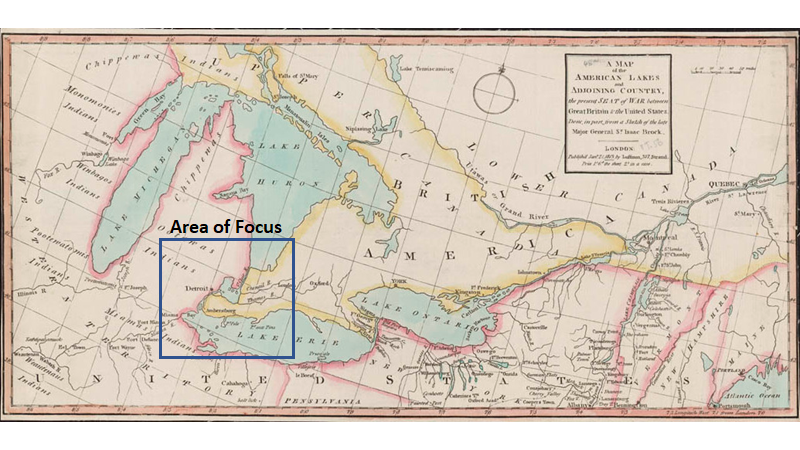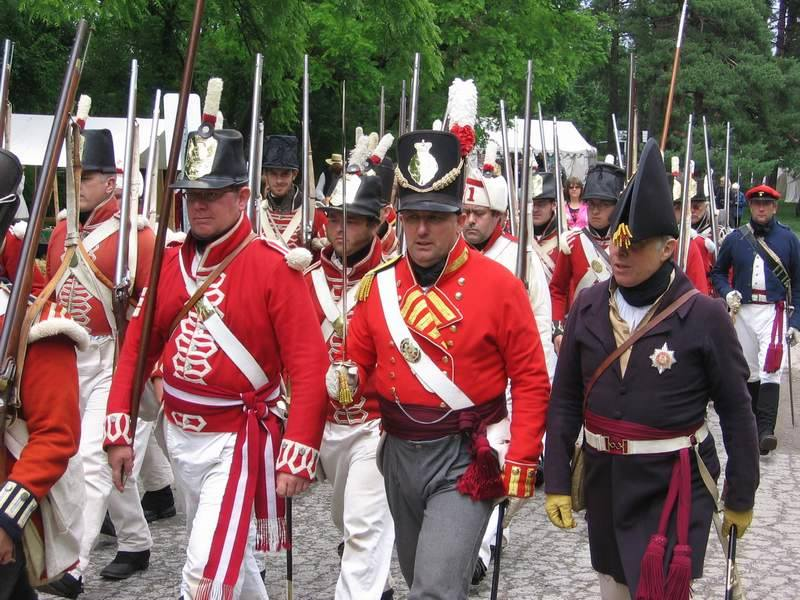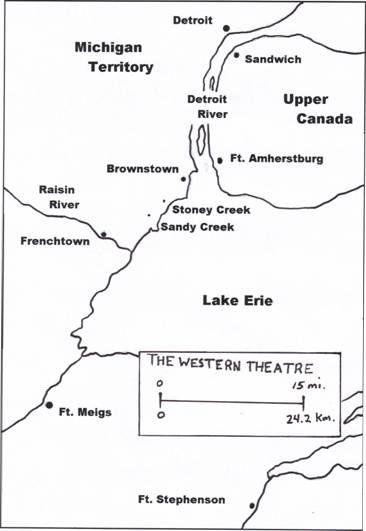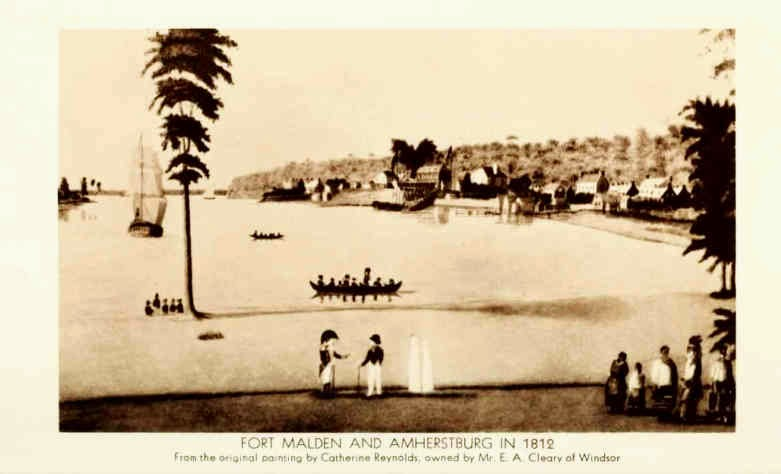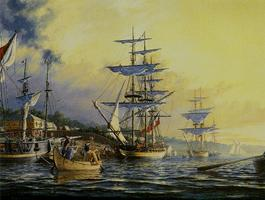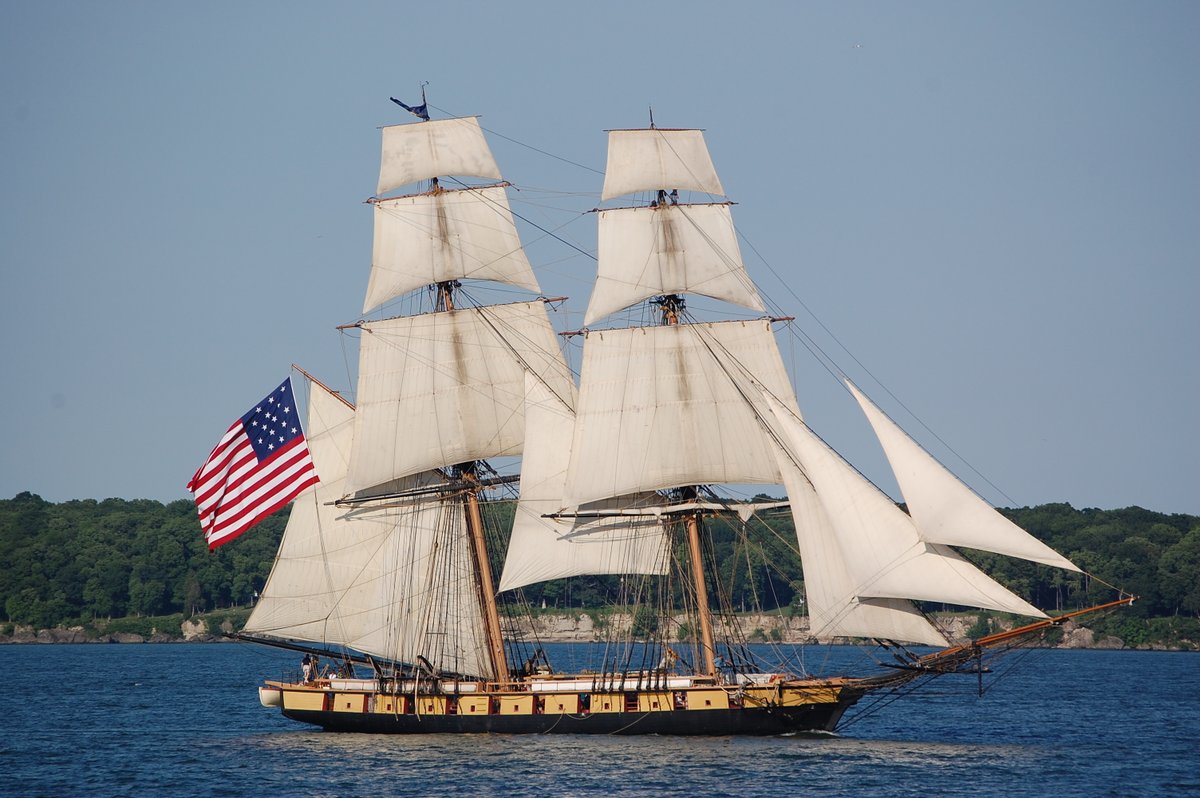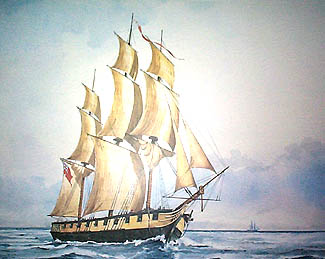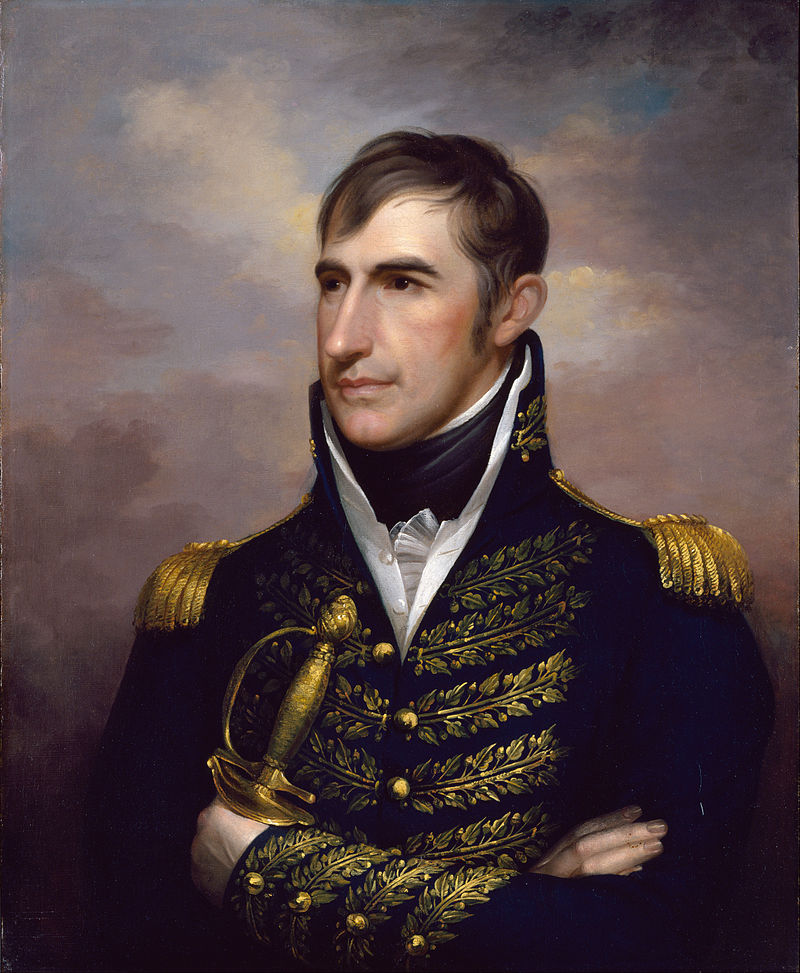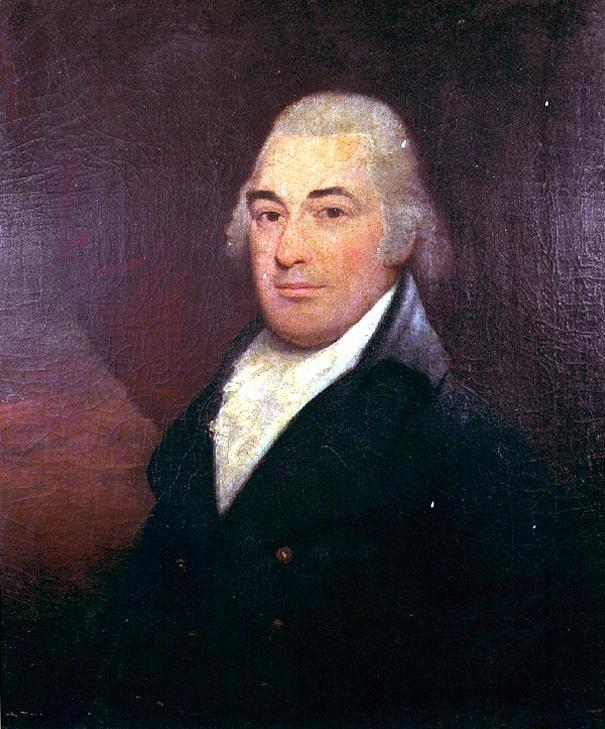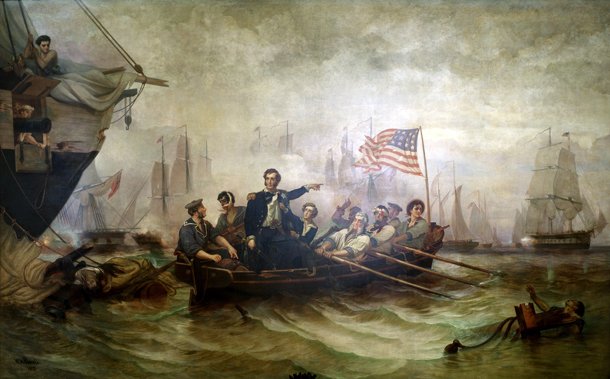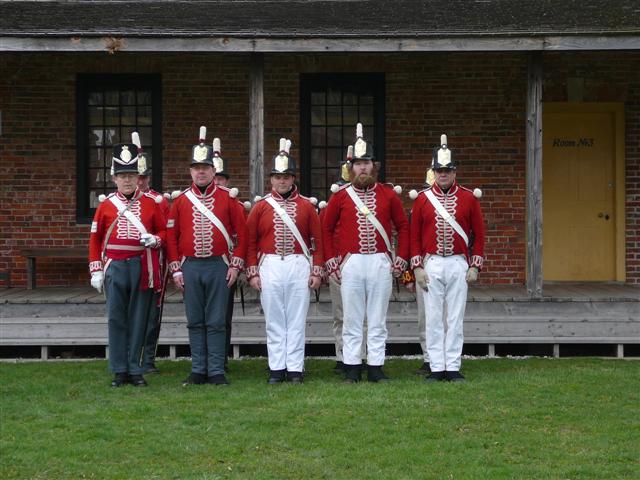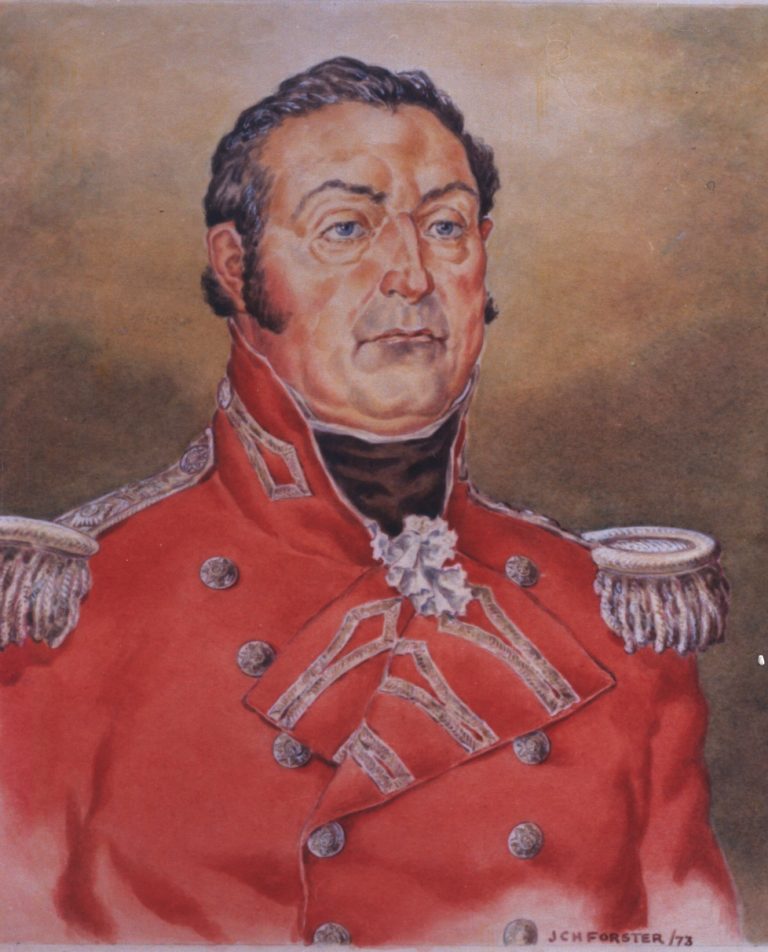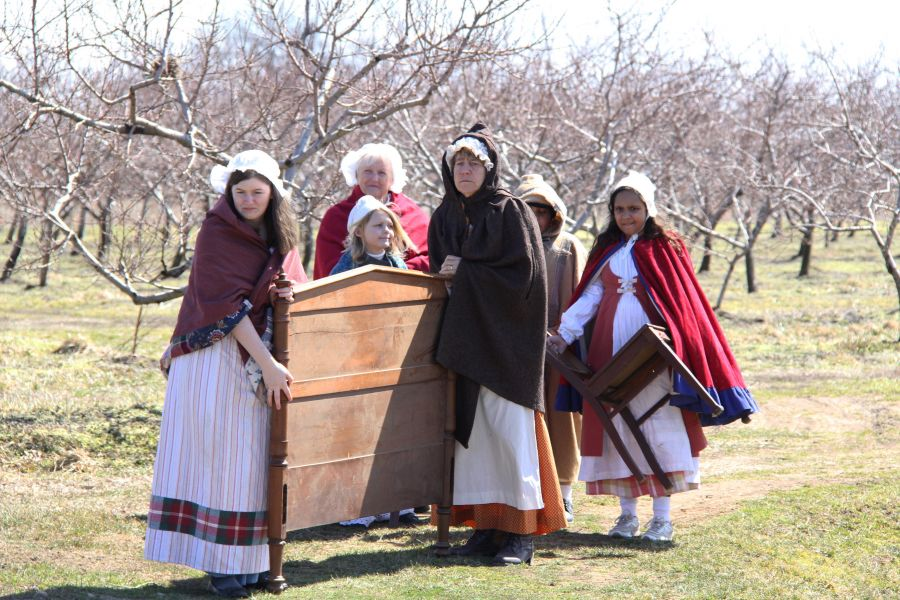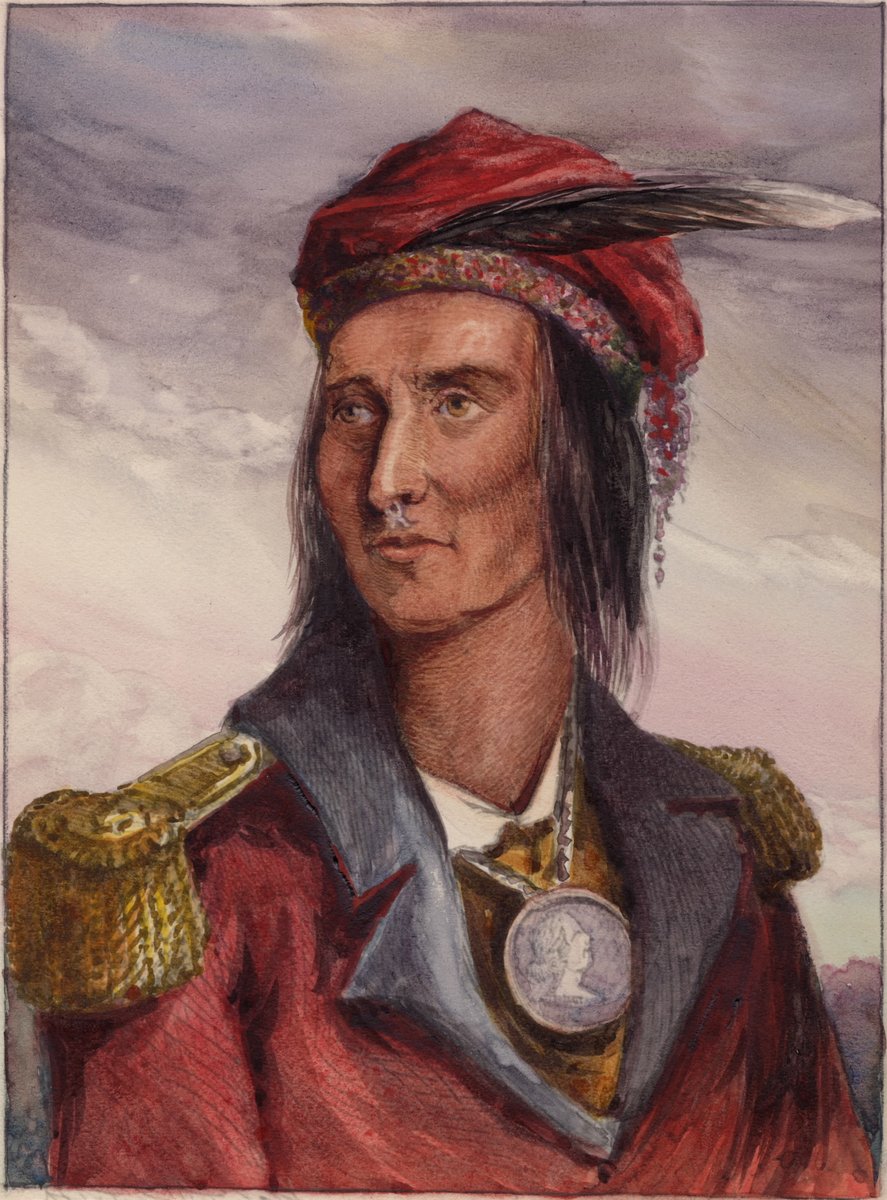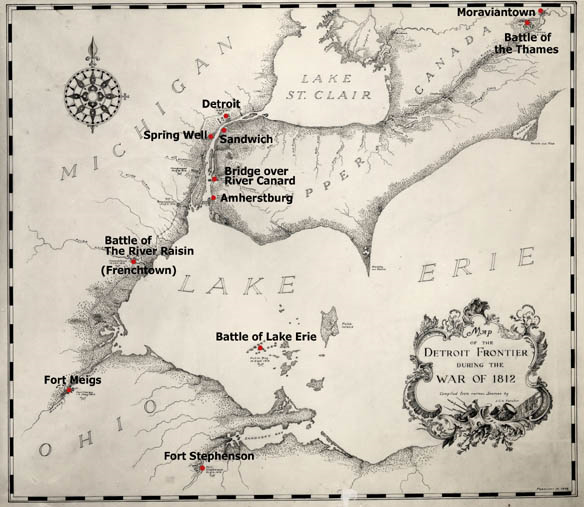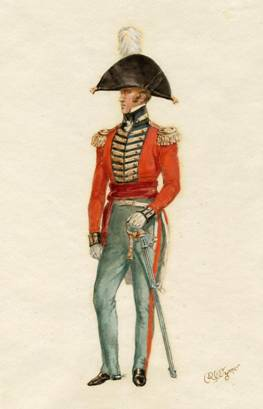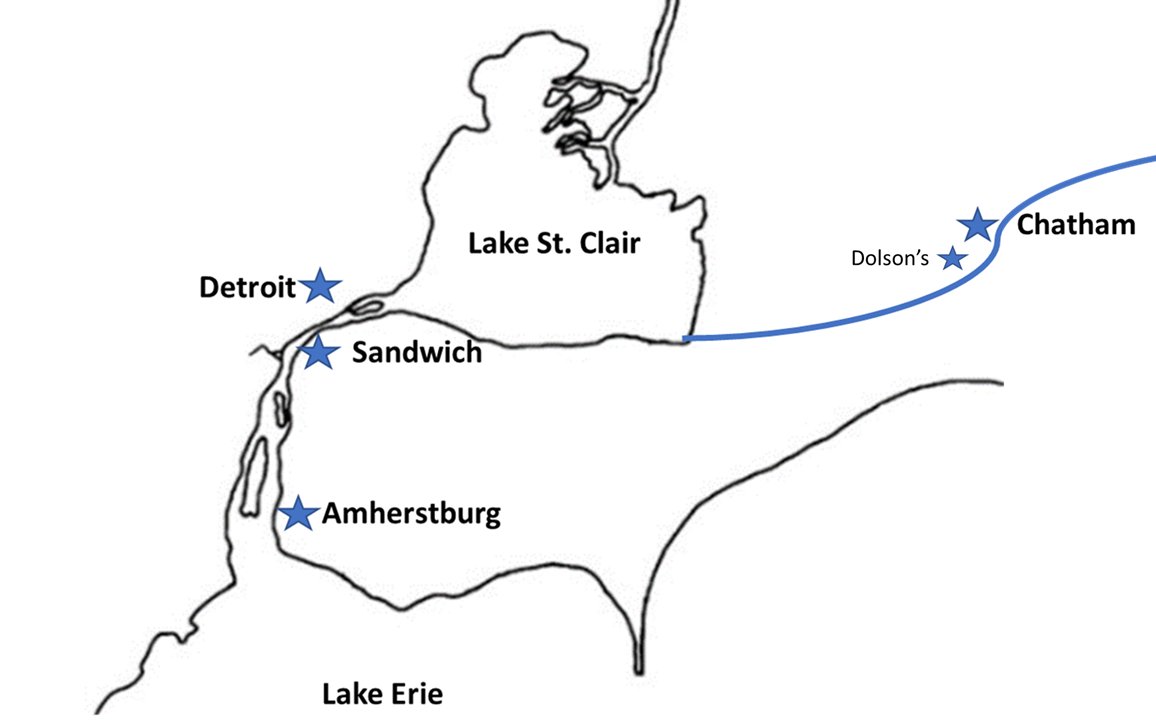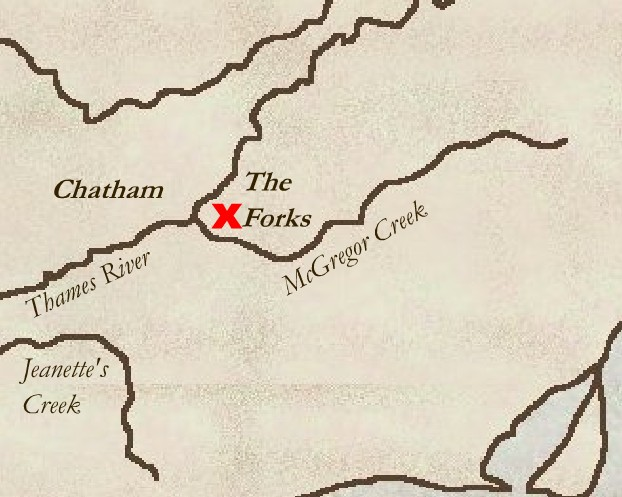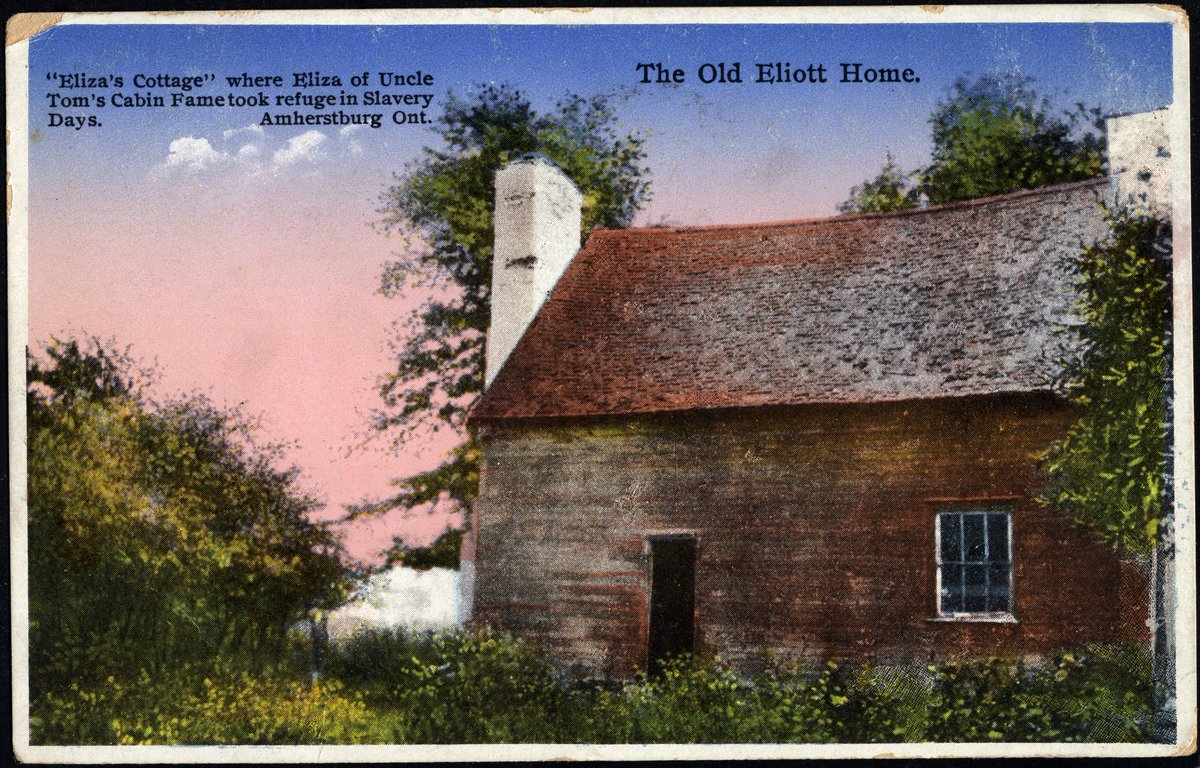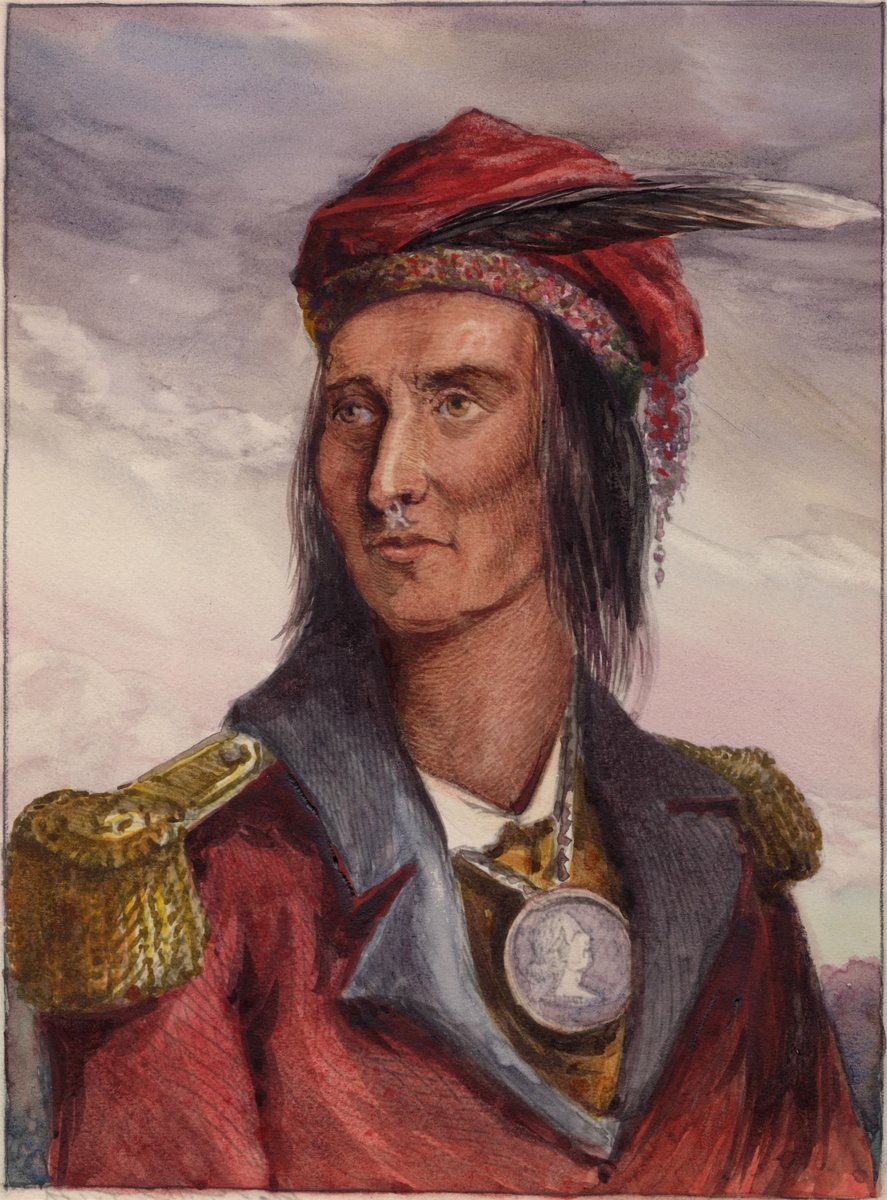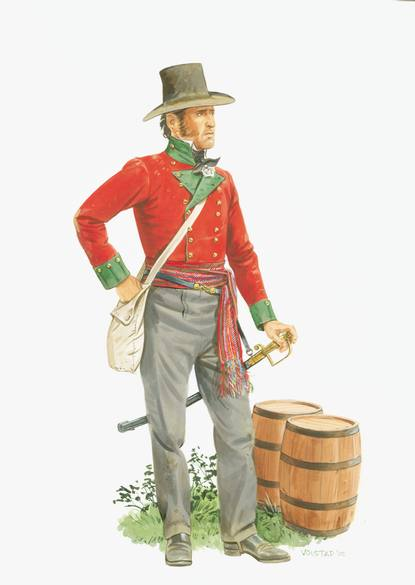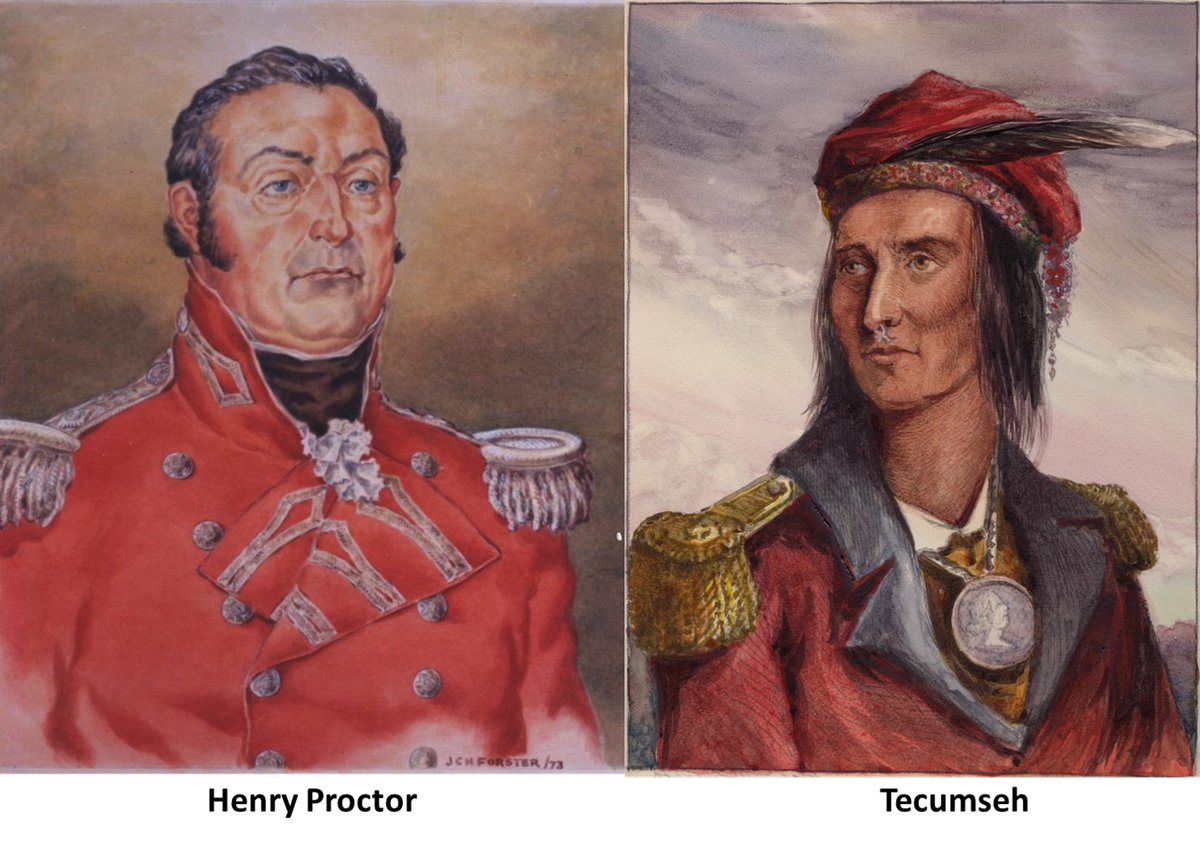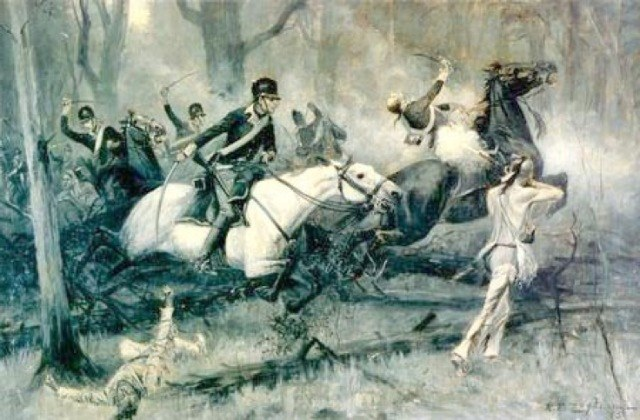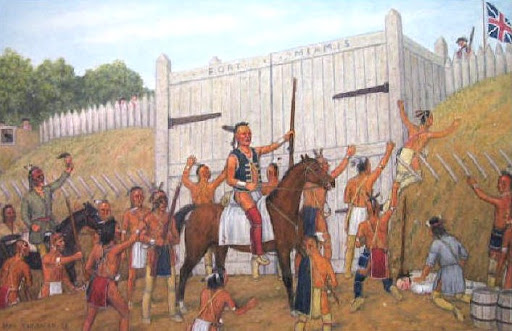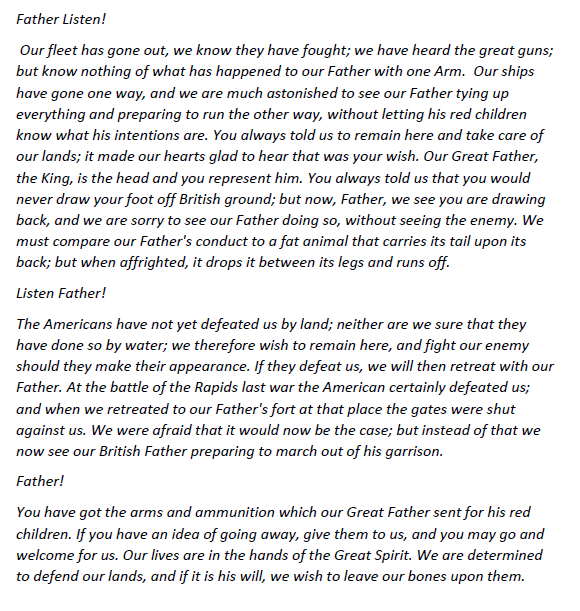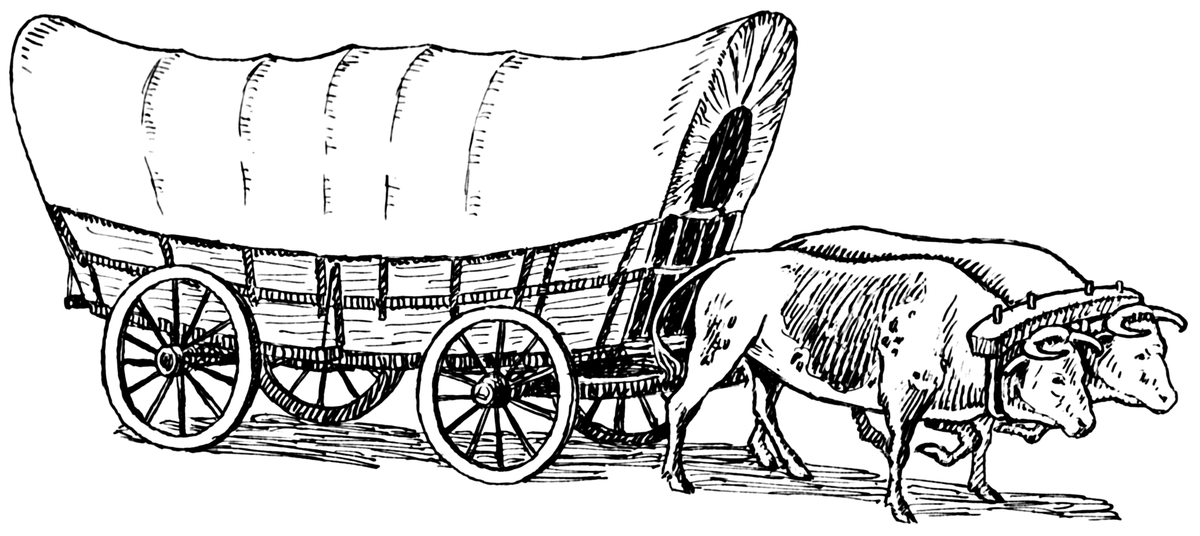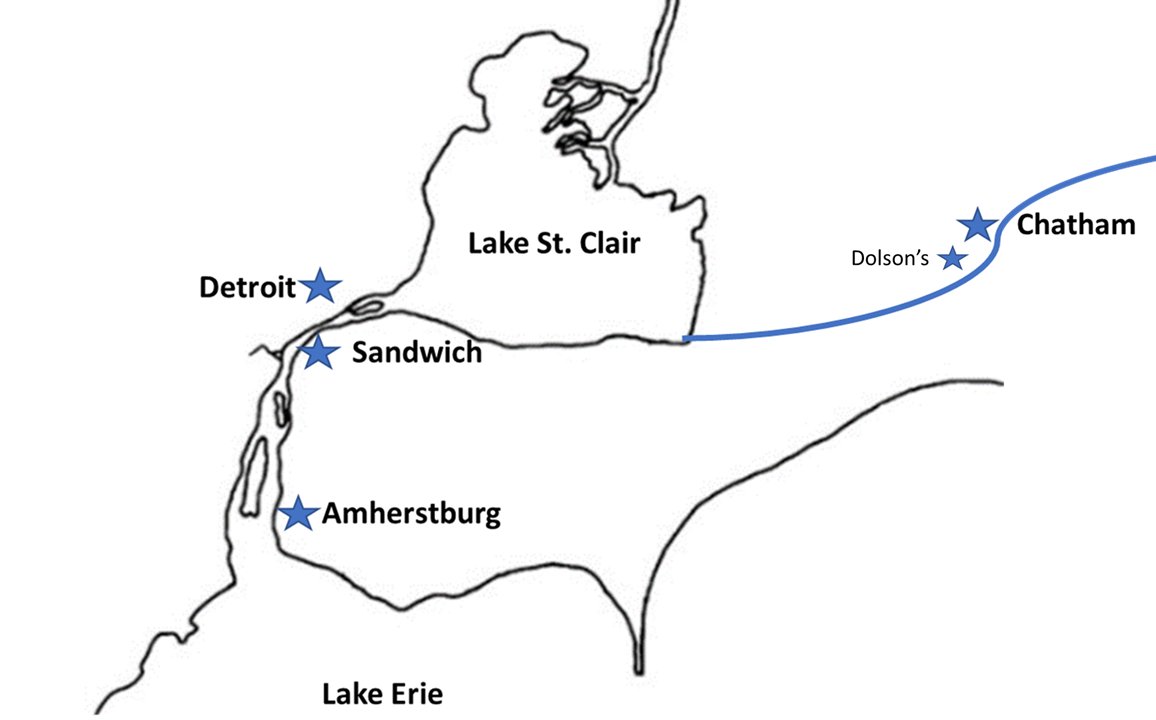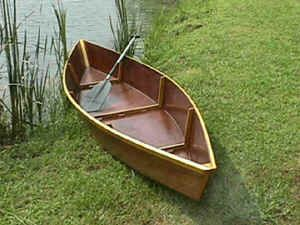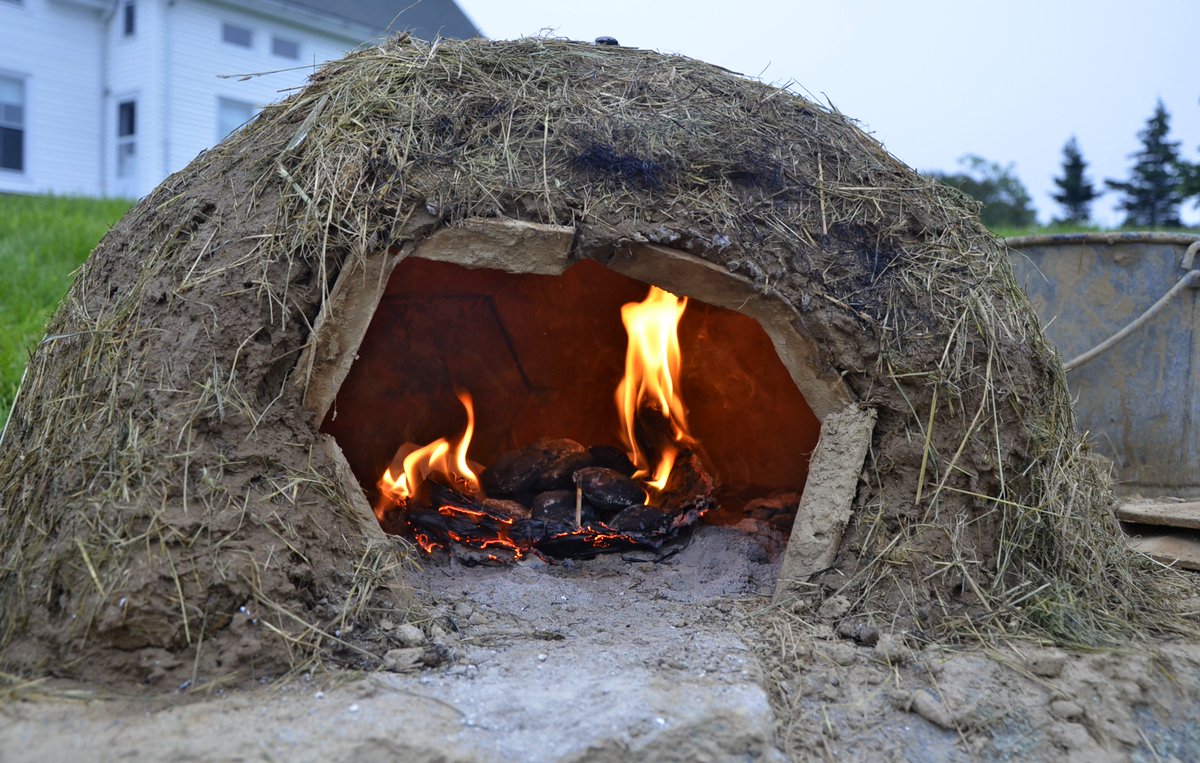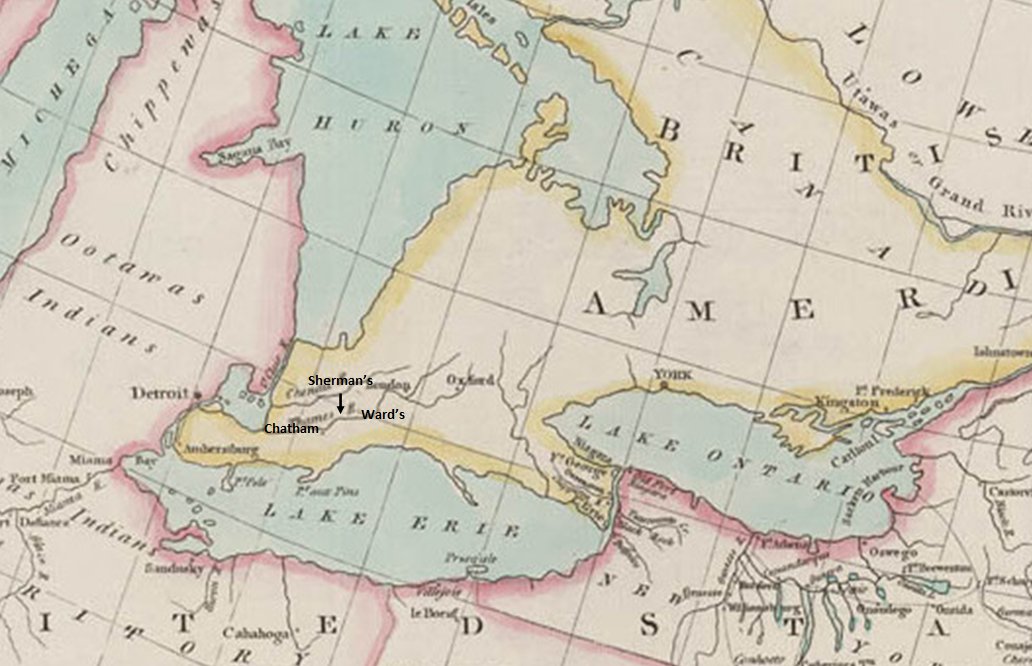War of 1812. Retreat up the Thames River and the Battle of the Thames (Battle of Moraviantown). A Thread following the British army day by day.
Utilizing primarily the Court Martial Transcripts of the Trial of Major General Henry Proctor, we are going to examine
1/x
Utilizing primarily the Court Martial Transcripts of the Trial of Major General Henry Proctor, we are going to examine
1/x
the events of the autumn of 1813 in Upper Canada.
The British had divided Upper Canada into 3 Divisions, with the area including Detroit considered the Right Division.
The entire population of Upper Canada was around 80,000 people in 1812. Most of that population was
2/x
The British had divided Upper Canada into 3 Divisions, with the area including Detroit considered the Right Division.
The entire population of Upper Canada was around 80,000 people in 1812. Most of that population was
2/x
in the Niagara area, York (present day Toronto) and the St. Lawrence River valley (including Kingston the largest town in Upper Canada).
The western end of the province (the area of study) was sparsely populated with most settlements along the lake or major rivers as the
3/x
The western end of the province (the area of study) was sparsely populated with most settlements along the lake or major rivers as the
3/x
few roads were in poor repair and seldom passable.
The Right Division had 3 garrisons, in Amherstburg, Sandwich and Detroit. The total strength of these garrisons was approximately 1200 men, with the majority being the 41st Regiment. The 41st Regiment had been losing
4/x
The Right Division had 3 garrisons, in Amherstburg, Sandwich and Detroit. The total strength of these garrisons was approximately 1200 men, with the majority being the 41st Regiment. The 41st Regiment had been losing
4/x
men throughout 1813 in this theatre, with losses at the River Raisin, Fort Meigs and most recently Fort Stephenson. They had received some transfers from their 2nd Battalion which had arrived in Upper Canada earlier that summer.
5/x
5/x
There was a naval depot at Amherstburg where the Lake Erie fleet was based. There was also a considerable number of Indigenous Allies that were displaced from their homes and relying on the British Indian Department for support and sustenance.
The army was very short
6/x
The army was very short
6/x
on stores and the soldiers were 6 months or more in arrears of pay.
Control of Lake Erie and access to shipping was vital to the continuation of this Division in this area.
7/x
Control of Lake Erie and access to shipping was vital to the continuation of this Division in this area.
7/x
Friday, September 10, 1813: Intelligence had revealed that the Americans were gathering together a new army for the recapture of Detroit and possibly more. The American Navy had just launched two new brigs, the Lawrence and Niagara. With the British fleet in Amherstburg
8/x
8/x
awaiting the completion of the HMS Detroit, the Americans had control of the lake.
The naval base at Amherstburg was short of seamen, stores and ordnance. Guns were taken from the fortifications in Amherstburg in an effort to finish outfitting the Detroit. Soldiers
9/x
The naval base at Amherstburg was short of seamen, stores and ordnance. Guns were taken from the fortifications in Amherstburg in an effort to finish outfitting the Detroit. Soldiers
9/x
- Royal Newfoundland Regiment and the 41st Regiment were pressed into service as landsmen on board the fleet. Feeling the desperate need of the garrisons, Commodore Robert Barclay sailed out with his fleet to meet Commodore Oliver Hazard Perry and the American fleet.
10/x
10/x
The Americans were to win a dramatic victory.
Much more detail can be found at: https://en.wikipedia.org/wiki/Battle_of_Lake_Erie
Perry">https://en.wikipedia.org/wiki/Batt... writing to General William Henry Harrison:
Dear General:
We have met the enemy and they are ours. Two ships, two brigs, one schooner and one sloop.
11/x
Much more detail can be found at: https://en.wikipedia.org/wiki/Battle_of_Lake_Erie
Perry">https://en.wikipedia.org/wiki/Batt... writing to General William Henry Harrison:
Dear General:
We have met the enemy and they are ours. Two ships, two brigs, one schooner and one sloop.
11/x
Yours with great respect and esteem,
O.H. Perry
Brig Niagara, off the Western Sister,
Head of Lake Erie, September 10, 1813, 4 P.M.
And Perry also wrote to Secretary of the Navy, William Jones:
Sir:- It has pleased the Almighty to give to the arms of the United States
12/x
O.H. Perry
Brig Niagara, off the Western Sister,
Head of Lake Erie, September 10, 1813, 4 P.M.
And Perry also wrote to Secretary of the Navy, William Jones:
Sir:- It has pleased the Almighty to give to the arms of the United States
12/x
a signal victory over their enemies on this lake. The British squadron, consisting of two ships, two brigs, one schooner and one sloop, have this moment surrendered to the force under my command after a sharp conflict.
I have the honor to be, Sir, very respectfully,
13/x
I have the honor to be, Sir, very respectfully,
13/x
your obedient servant,
O. H. Perry
While the gun fire of the naval battle could be heard as far away as Moraviantown, for those waiting in Amherstburg, it was not immediately apparent what was the outcome.
14/x
O. H. Perry
While the gun fire of the naval battle could be heard as far away as Moraviantown, for those waiting in Amherstburg, it was not immediately apparent what was the outcome.
14/x
Saturday September 11th: The British garrison at Amherstburg is still not certain of the outcome of the naval battle but with no message or sign of the fleet, the worst is feared.
Lt. Colonel William Evans, Commanding Officer of the 41st Regiment has traveled
15/x
Lt. Colonel William Evans, Commanding Officer of the 41st Regiment has traveled
15/x
from Sandwich with Major General Henry Proctor to determine the result of the naval action.
(This is not an actual portrait of Proctor - it is a composite based on descriptions. There is no known formal portrait)
16/x
(This is not an actual portrait of Proctor - it is a composite based on descriptions. There is no known formal portrait)
16/x
http://www.fortyfirst.org/research-05-battle-of-lake-erie-casualties.html
Follow">https://www.fortyfirst.org/research-... this link for great details on the casualties and captured on board the British fleet.
It really reinforces how many of the crew were from the Royal Newfoundland Regiment and the 41st Regiment.
17/x
Follow">https://www.fortyfirst.org/research-... this link for great details on the casualties and captured on board the British fleet.
It really reinforces how many of the crew were from the Royal Newfoundland Regiment and the 41st Regiment.
17/x
September 12, 1813: With no word, it is assumed the naval action has been lost and without control of Lake Erie, the British posts can be longer be maintained. Evans begins to make arrangements to transport women, children, sick and anything else that might be an
18/x
18/x
encumbrance to the army on the march during its retreat.
The acting Brigade Major, Captain Hall, was sent with Matthew Elliot of the British Indian Department to meet with Tecumseh to arrange a council with the Indigenous leaders. The 15th was set as the date.
19/x
The acting Brigade Major, Captain Hall, was sent with Matthew Elliot of the British Indian Department to meet with Tecumseh to arrange a council with the Indigenous leaders. The 15th was set as the date.
19/x
September 13, 1813: Lt. Colonel Augustus Warburton, Inspecting Field Officer of Militia, effectively had command of Amherstburg. It was his understanding that Proctor had a meeting in Sandwich with Captain M.C. Dixon of the Royal Engineers, Lieutenant Felix Troughton
20/x
20/x
of the Royal Artillery and Captain Hall of the Provincial Marine Department. Warburton was not invited nor consulted.
Dixon was the only Engineer with the Right Division. Was shown a map by Proctor and Proctor indicated that he would retreat to the River Thames
21/x
Dixon was the only Engineer with the Right Division. Was shown a map by Proctor and Proctor indicated that he would retreat to the River Thames
21/x
and make a stand at Dolson’s (a small trading post just before modern Chatham). Dixon was to begin dismantling the fort at Amherstburg without alarming the indigenous allies.
Troughton was to make arrangements for sending away Ordnance and Stores. He was to leave the
22/x
Troughton was to make arrangements for sending away Ordnance and Stores. He was to leave the
22/x
field guns for the retreat with the army but everything else was intended for the Forks of the Thames (in Chatham, beyond Dolson’s) where he was going to have works erected.
23/x
23/x
Tuesday, September 14th: The dismantling of the fort began in a dramatic fashion as part of a facing was thrown in a ditch. This caught the attention of Tecumseh who flew off in a rage to Matthew Elliot. Elliot came to Warburton and expressed concern about doing this
24/x
24/x
without a meeting with Tecumseh and his people in a council. He said they might cut the Wampum Belt and no man would be able to answer for the consequences.
Warburton wrote to Proctor, expressing his concern. Proctor replied, “he has the perfect right to give any secret
25/x
Warburton wrote to Proctor, expressing his concern. Proctor replied, “he has the perfect right to give any secret
25/x
orders he thought proper to Department Heads.”
Captain William Caldwell of the British Indian Department said that after the loss of the fleet, the Indigenous allies were very apprehensive. He said that some Chiefs came to him and said they were very reluctant to move
26/x
Captain William Caldwell of the British Indian Department said that after the loss of the fleet, the Indigenous allies were very apprehensive. He said that some Chiefs came to him and said they were very reluctant to move
26/x
their families to Canada. They also were concerned about another deception, referencing 1783 (Treaty of Paris) and 1795 (Battle of Fallen Timbers). Caldwell was so concerned about their mood that he moved his family away to safety. A council date was set for the next day
27/x
27/x
September 15, 1813: The first council. Tecumseh voices his frustration over the dismantling of the fort and the lack of communications or explanations to him.
A follow-up meeting is set for the 18th.
Tecumseh makes the famous remark, “We must compare our Father’s
28/x
A follow-up meeting is set for the 18th.
Tecumseh makes the famous remark, “We must compare our Father’s
28/x
conduct to a fat animal that carries its tail upon its back; but when affrighted, it drops it between its legs and runs off.”
While no portraits exist of Henry Proctor, he has been described as being overweight.
The Battle at the Rapids in the Last War is the
29/x
While no portraits exist of Henry Proctor, he has been described as being overweight.
The Battle at the Rapids in the Last War is the
29/x
Battle of Fallen Timbers (20 August 1794)
https://en.wikipedia.org/wiki/Battle_of_Fallen_Timbers">https://en.wikipedia.org/wiki/Batt...
The full translation of Tecumseh’s speech is attached
30/x
https://en.wikipedia.org/wiki/Battle_of_Fallen_Timbers">https://en.wikipedia.org/wiki/Batt...
The full translation of Tecumseh’s speech is attached
30/x
September 16, 1813: Carts and wagons are being organized in Amherstburg for transport. Sufficient conveyances are to be arranged for families that will retire with the army.
A Sergeant White of the 41st left Sandwich in charge of a boat of General Proctor’s baggage.
31/x
A Sergeant White of the 41st left Sandwich in charge of a boat of General Proctor’s baggage.
31/x
After he arrived at Dolson’s, shortly after a second boat arrived also with the General’s baggage.
Captain Crowther of the 41st Regiment was told by Proctor that the troops were to retire and it was his intention that Ovens and Barracks would be built along the
32/x
Captain Crowther of the 41st Regiment was told by Proctor that the troops were to retire and it was his intention that Ovens and Barracks would be built along the
32/x
route of retreat. 18 to 20 pirogues of a large construction (a simple, shallow drafted watercraft built like a canoe) were to be made to transport the stores up the Thames. Crowther was to inspect a position at the Chatham forks which was described as a defendable
33/x
33/x

 Read on Twitter
Read on Twitter